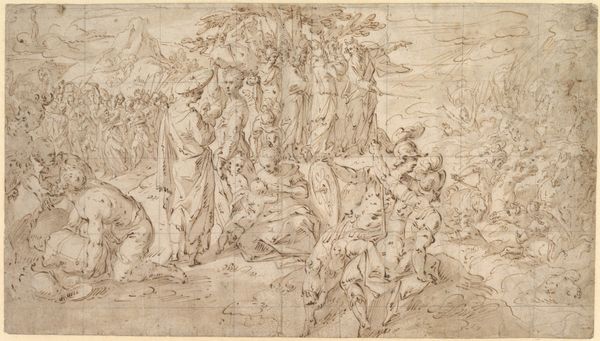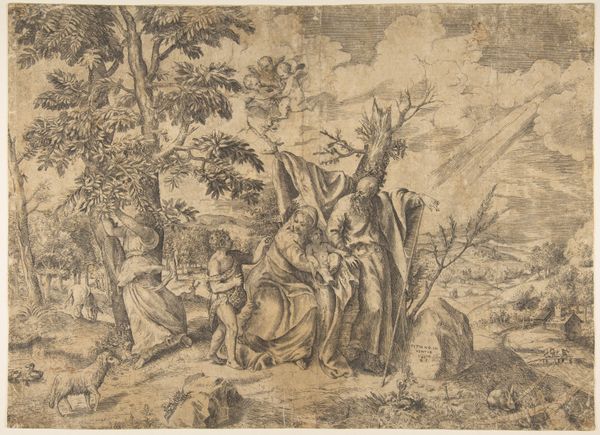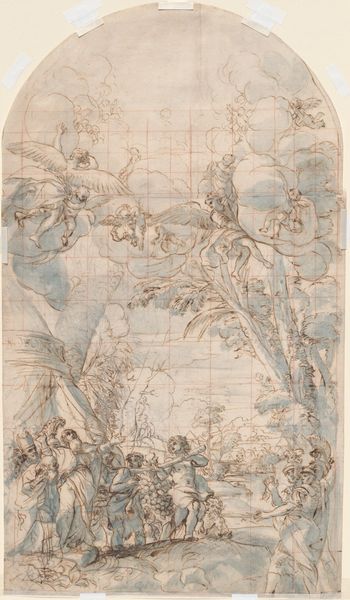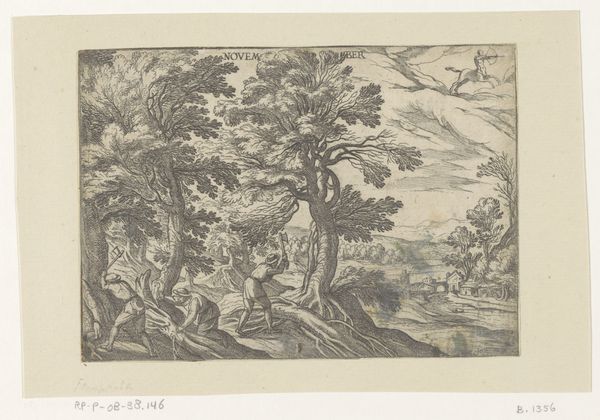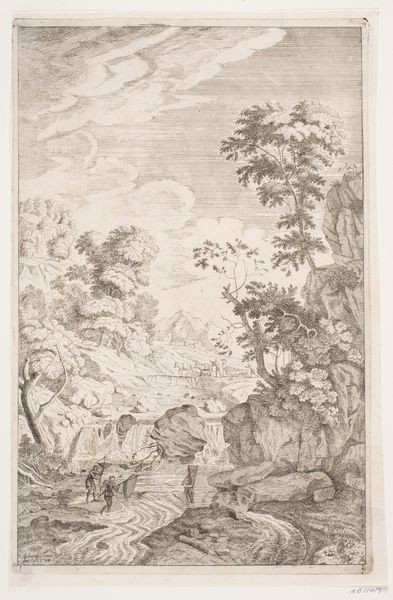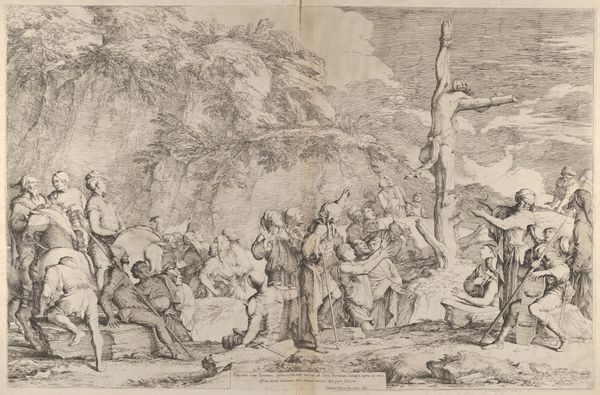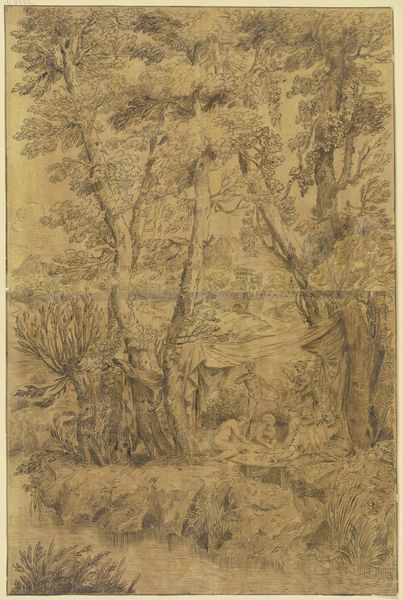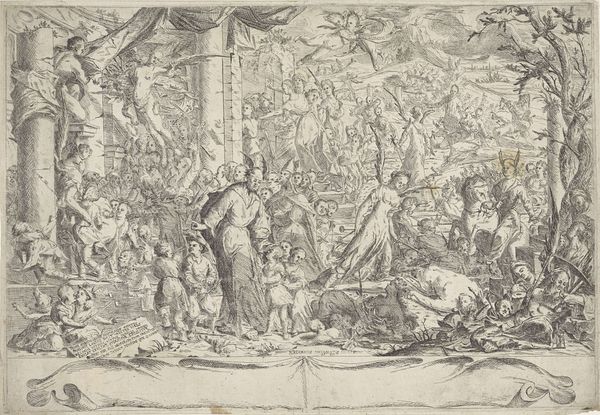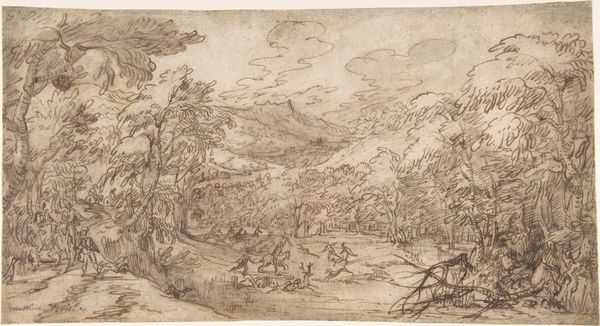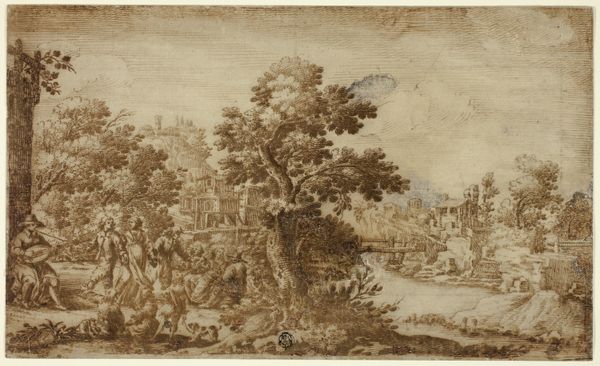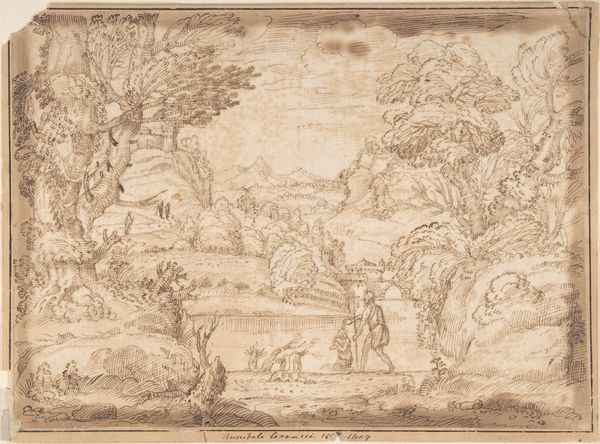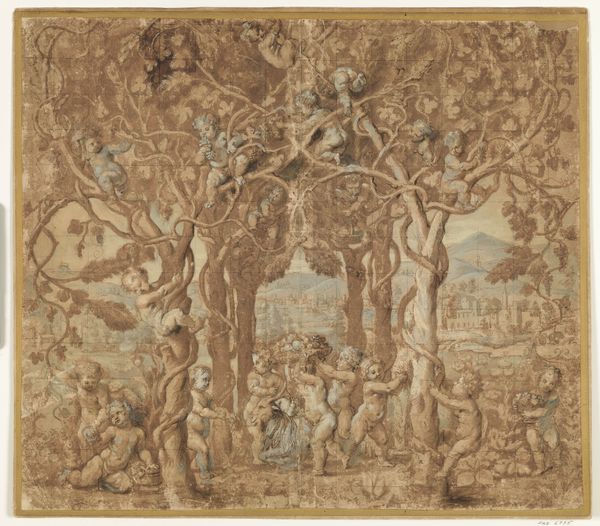
drawing, print, ink, pen
#
drawing
#
baroque
#
ink painting
# print
#
pen sketch
#
pencil sketch
#
human-figures
#
landscape
#
ink
#
pen
#
history-painting
Dimensions: sheet: 10 5/8 x 11 7/16 in. (27 x 29.1 cm)
Copyright: Public Domain
Curator: The ink and pen drawing before us is entitled "Ornamental Theater Scene with Trees," created sometime in the 17th or 18th century. It's currently held here at The Metropolitan Museum of Art. Editor: My first impression is… theatrical, obviously! The stark ink wash and delicate pen work creates this slightly unsettling, dreamlike battlefield. It has a strangely ornamental quality as if war could be aesthetically pleasing or at least elegantly staged. Curator: Exactly. The baroque love for grandeur is unmistakable, but also consider the political context of imagery. Drawings such as this, produced by anonymous hands, were often used for propaganda, framing narratives of conflict for public consumption. The scene is a meticulously crafted spectacle. Editor: A spectacle designed, it seems, to desensitize us to the very real human suffering on display. Look at those bodies strewn across the foreground! Their anonymous positions underscore the brutal consequences of conflict—the disposable nature of those who fought and died, with little impact on who makes or benefits from the outcome. The distance created through a drawing of this scale feels deliberate, masking any sort of actual, lived horror from the comfort of the audience's eyes. Curator: It is intriguing how the scene depicts a decisive moment within what we might assume is the peak of battle, or at the moments after where casualties can be observed as part of the experience, an aesthetic appreciation in a space meant for it, making visible that those on display matter little outside that representation. Editor: Indeed, what does this ornamental approach tell us about the era's relationship with violence? About who got to define the narrative and how this type of romanticisation contributes to the marginalisation, for example, the indigenous population during a war scenario. Curator: Absolutely. And it begs the question, what purpose did these drawings serve, other than to reinforce existing power structures? Editor: For me, reflecting on the historical contexts woven into "Ornamental Theater Scene with Trees," challenges us to critique how spectacle and artistic representation can serve both as powerful tools of authority and potential sites of dissent. Curator: Precisely. It allows us to question whose stories are told and how history is actively shaped by these visual records. Editor: And hopefully prompting each of us to look a little closer, think a little deeper about whose voices aren't being heard, or actively omitted, in grand presentations of war.
Comments
No comments
Be the first to comment and join the conversation on the ultimate creative platform.
